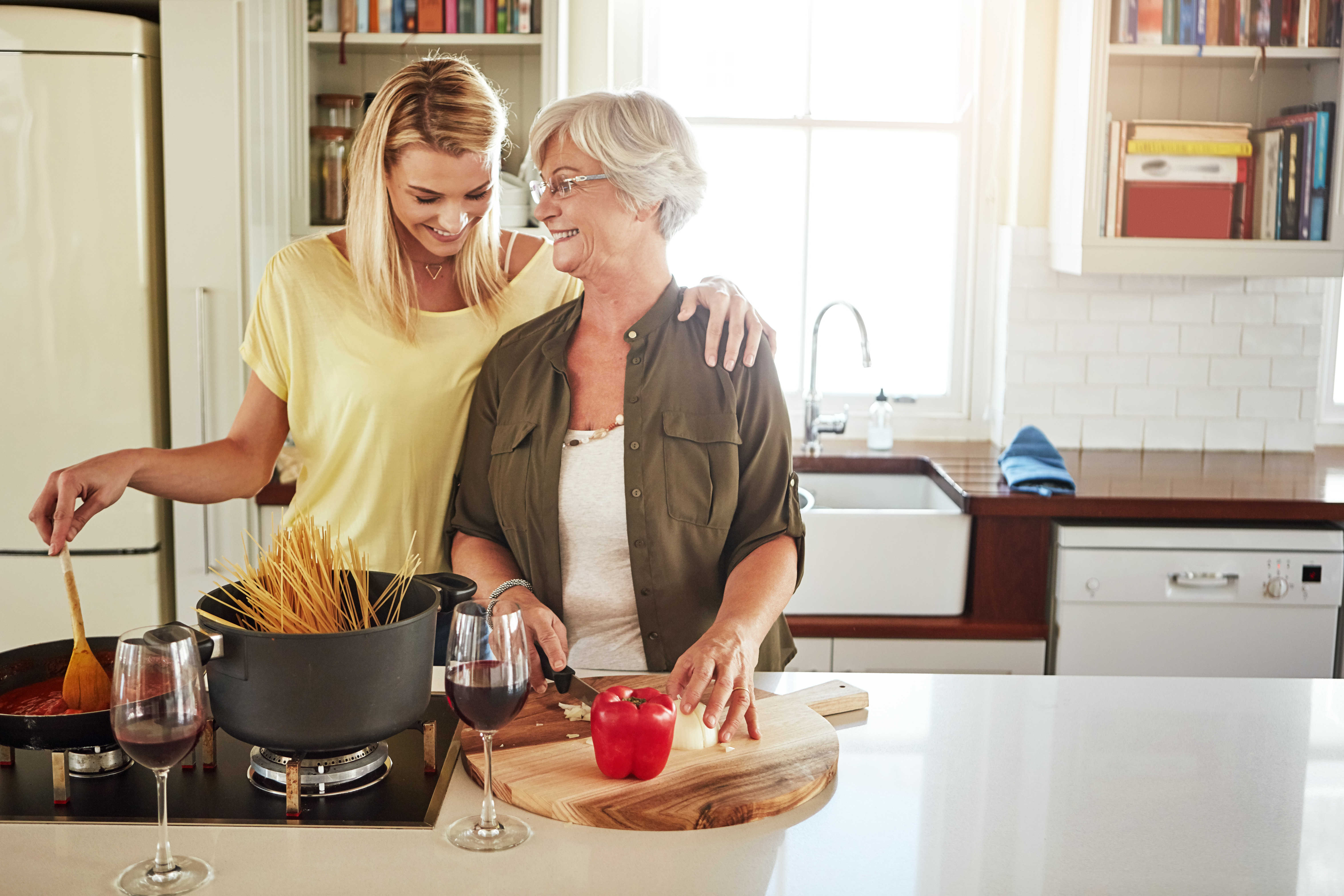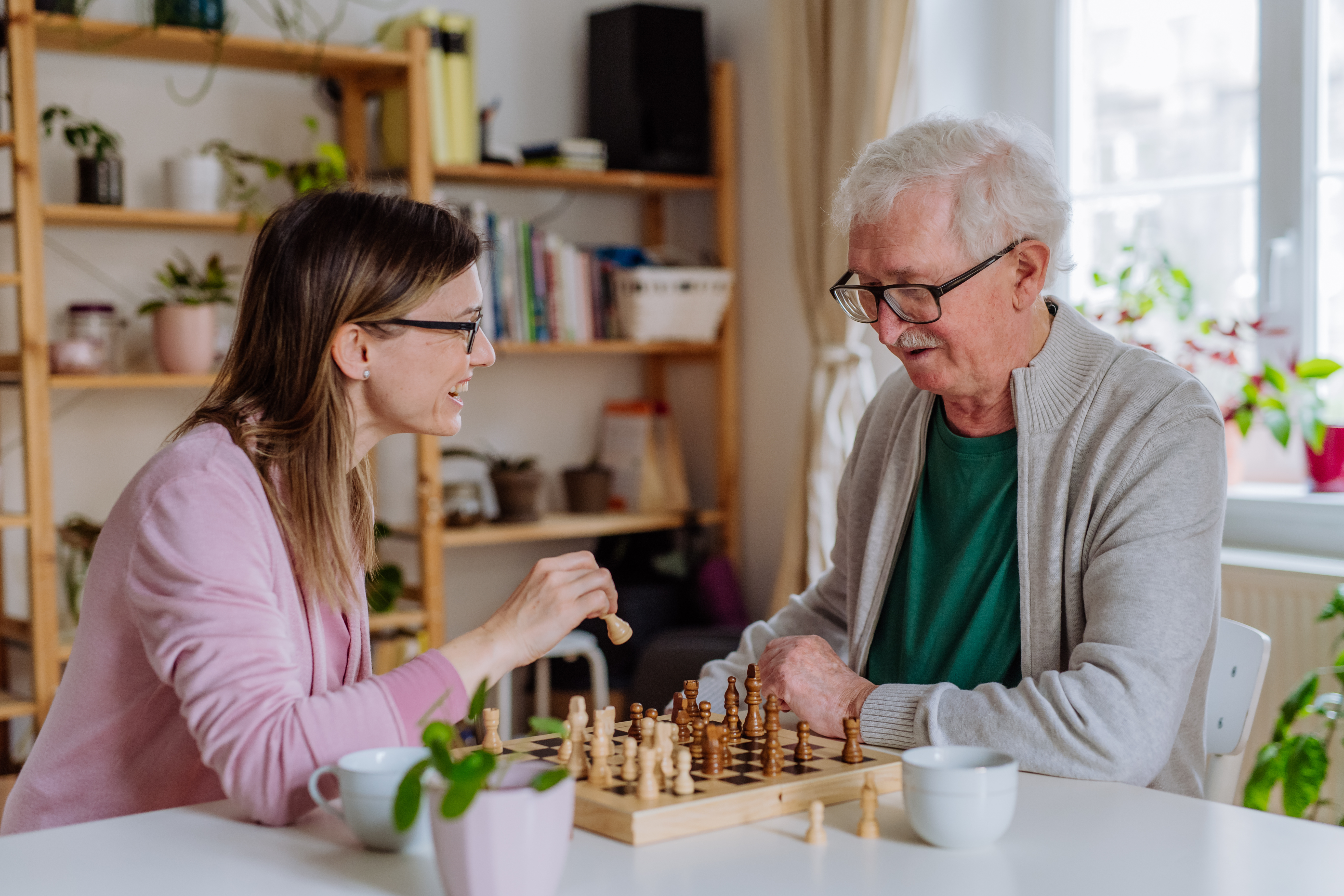Understanding falls: why they happen and how to prevent them

Falls are the leading cause of injury among older adults, and they can occur due to a combination of factors such as medication side effects, loss of muscle mass, or not using mobility aids. If your loved one does fall, check for injuries and get them medical care if needed. Ways to help prevent falls can include making home modifications, exercising, and reviewing medications.
Unless your loved one is a stunt double on a movie set, falling down isn’t really something you want to happen.
Whether they are carrying a package up the doorstep, walking over a sleeping pet that suddenly jolts awake, or they are out in public for everyone to see, falls can be painful and feel embarrassed. And while we all can stumble from time to time, falling when you’re older can be serious.
While falls can be scary stuff, there are ways to prevent them, even as your loved one’s abilities and care needs change.
Let’s take a look at why falls can happen, what to do if your loved one falls, and how to make them less likely to happen.
Understanding why falls happen
To help prevent falls, it’s important to understand how they happen. Falls can happen for several different reasons, and the risk of falling can increase as you age. Falls are the leading cause of injury for adults over the age of 65, and it’s estimated that 14 million, or 1 in 4 older adults, fall every year.1 Here are some of the common reasons why falls can happen:
Longer life expectancy: This can lead to a decline in muscle mass, the need for medications which can have side effects that lead to falls, and the more time you walk on Earth, the more chances there are of falling.
Previous fall: The risk of falling can increase significantly if a fall has happened before.
Home environment: Missing grab bars, throw rugs, loose handrails, poor lighting, and general home disrepair can all be factors in a fall at home.
Polypharmacy: This term refers to the regular use of five or more medications at the same time that can lead to side effects that cause falls like drowsiness, dizziness, and cognitive impairment.
Not using mobility aides: Not using a required cane or walker can result in a fall.
Where do falls happen most often?
Falls can happen anywhere, but many happen right at home, where your loved one may spend the majority of their time. Over 79% of falls that result in visits to emergency departments occur at home, with some of the most common areas being bathrooms, bedrooms, and stairs.2
Now, that doesn’t mean your loved one’s home isn’t safe. What it does mean is that if you’re worried about your older adult loved one falling or you’re wondering what to do if your loved one keeps falling, there are a few changes you can make to the home.
Signs a fall needs medical attention
Not every fall results in a serious injury, but it’s important to know when it’s the right time to seek medical care. Sometimes a fall results in a bruise or a bit of embarrassment, but other times it can cause hidden harm. With older adults, especially ones who have a history of falls, it’s better to err on the side of caution and overtreatment.
Here is a list of common red flags that signal the need for urgent medical attention:
Head injury: If your loved one hits their head, be alert for any loss of consciousness, confusion, drowsiness, severe headaches, or vomiting afterward.
Severe pain: If your loved one has issues moving a limb, intense pain, or swelling. Hip and wrist fractures are common in older adults after falls.
Confusion or change in behavior: Does your loved one seem unusually confused, weak, or just not themselves? This could indicate a concussion, stroke, or other issue.
In general, trust your instincts. If something seems wrong or your loved one is in pain, call for medical help. It’s often safer to be overly cautious and have your loved one go to the doctor after a fall.
Steps to take after a fall
When a fall happens, it can be scary for both you and your loved one. Here are some steps to take after a fall:
Stay calm and check for injuries: Take a deep breath – this will help you think clearly. Then encourage your loved one to stay still so you can assess their condition. Check their breathing, if they are conscious, if there’s any bleeding or areas that look injured. If your loved one is unable to get up, is complaining of severe pain, or is bleeding do not move them – call 911 for an ambulance right away.
Help them up if there’s no serious injury: If your loved one is mostly okay (maybe just a bit shaken up), help them into a comfortable position. You can start by rolling them on a side and then sitting in a seated position. Move gently and slowly.
Check again for signs of injury: Once your loved one is on a bed or a couch, check again for any injuries, signs of trauma, swelling, or numbness.
Figure out what caused the fall: Take a quick look around to see if your loved one tripped over a cord or rug, if they were rushing, or if the floor was wet in the bathroom. If you spot the hazard, remove it right away to prevent another fall. Also, ask your loved one how they were feeling before the fall. This can be a sign it may be a medical issue that needs attention.
Follow up with medical care: Let your loved one’s doctor know about the fall soon after it happens. Their doctor can determine if they should come in for a test or check-up.
Remember to reassure your loved one. It’s good if there’s no injury after a fall, but your loved one may feel embarrassed or scared. Words of support such as “I know that was frightening, but I’m glad you’re OK” or “let’s rest for a second and figure out how to prevent this from happening again” can go a long way in supporting your loved one and helping them stay confident after a fall.
Fall prevention
Many falls can be prevented by taking some proactive steps. Here are some practical strategies to reduce the risks of falls for your older adult loved one:
Make the home safer
Small changes at home can dramatically cut down on the risk of your loved one tripping or slipping at home. Start with a general check of the home — are the railings on the stairs still sturdy? Is there an uneven floorboard? As you look around the home here are some other tips to help you improve the safety of your loved one’s home:
Keep it clear: When you look at your loved one’s hallways, doorways, and rooms think “open concept” not “obstacle course.” Remove objects such as shoes, books, wires, and anything else that covers the floor.
Bar it: Install grab bars and handles in the bathroom. Nonslip mats on the floor are great too because they’re kind of like grab bars for your feet.
Tug the rug: Rugs can be serious tripping hazards, especially ones that slide easily.
Let there be light: Adding lighting where there isn’t any or just adding additional lighting can make it much easier to see around the house. Especially if your loved one has vision loss.
Stay active to improve balance
Regular exercise can be an excellent way to prevent falls for older adults, but it’s important to check with your loved one’s primary care physician about what and how much physical activity is OK.
Check with a local senior center, community recreation class, or try exercises at home. Here are some common exercises that can help with balance:
Walking
Light stretching
Yoga
Tai chi
Review medications and health factors
If your loved one is taking any medications, talk with them and their doctor or pharmacist about possible side effects. Some common side effects that can lead to a fall are:
Dizziness
Drowsiness
Drops in blood pressure
Lightheadedness
Watch for signs of loss of balance
When you are with your loved one watch out for these common signs that they might be having trouble with their balance:
Slowing gait speed
General reduced movement
Using furniture to move around the house
Decreased step height
Short walking strides
Loss of balance while turning
Forward flex posture (Where the head and upper back curve forward and the head protrudes in front of the shoulders)
Keep things within reach
Make sure the things your loved one uses most are at arm’s length wherever they are in the home such as a phone, remotes, or light switches. You can also research smart devices that can assist your loved one.
Keep your loved one involved in whatever changes you make. Talk to them about where they want their phone to charge at night, where a grab bar might help them, or what exercises they might like to try. This will empower your loved one, and you can remind them that fall prevention helps them stay healthy and independent for years to come.
Talking to your loved one about falls
As difficult as it may be sometimes – communication is key. Approach the topic of falls with care and empathy. Choose a moment when you can express any concerns you have – without laying blame or giving ultimatums. Let your loved one know you’re worried about them, tell them you want them to stay safe, and remind them that the best way to deal with falls is to prevent them from happening in the first place.
Try to have solutions ready, whether that’s home improvements or scheduling an appointment with their doctor. If their goal is to age in place, making their home safe is a way to support that.
Keep things optimistic. Many falls are preventable, and small changes can make your loved one safer. Remind them you’re in this together, and staying safe means more time that they get to do the things they love.
Schedule your Care Plan
If you’re unsure if your loved one is safe in their home, a Care Plan can provide personalized recommendations for care, giving you the guidance you need to create a better path forward.








